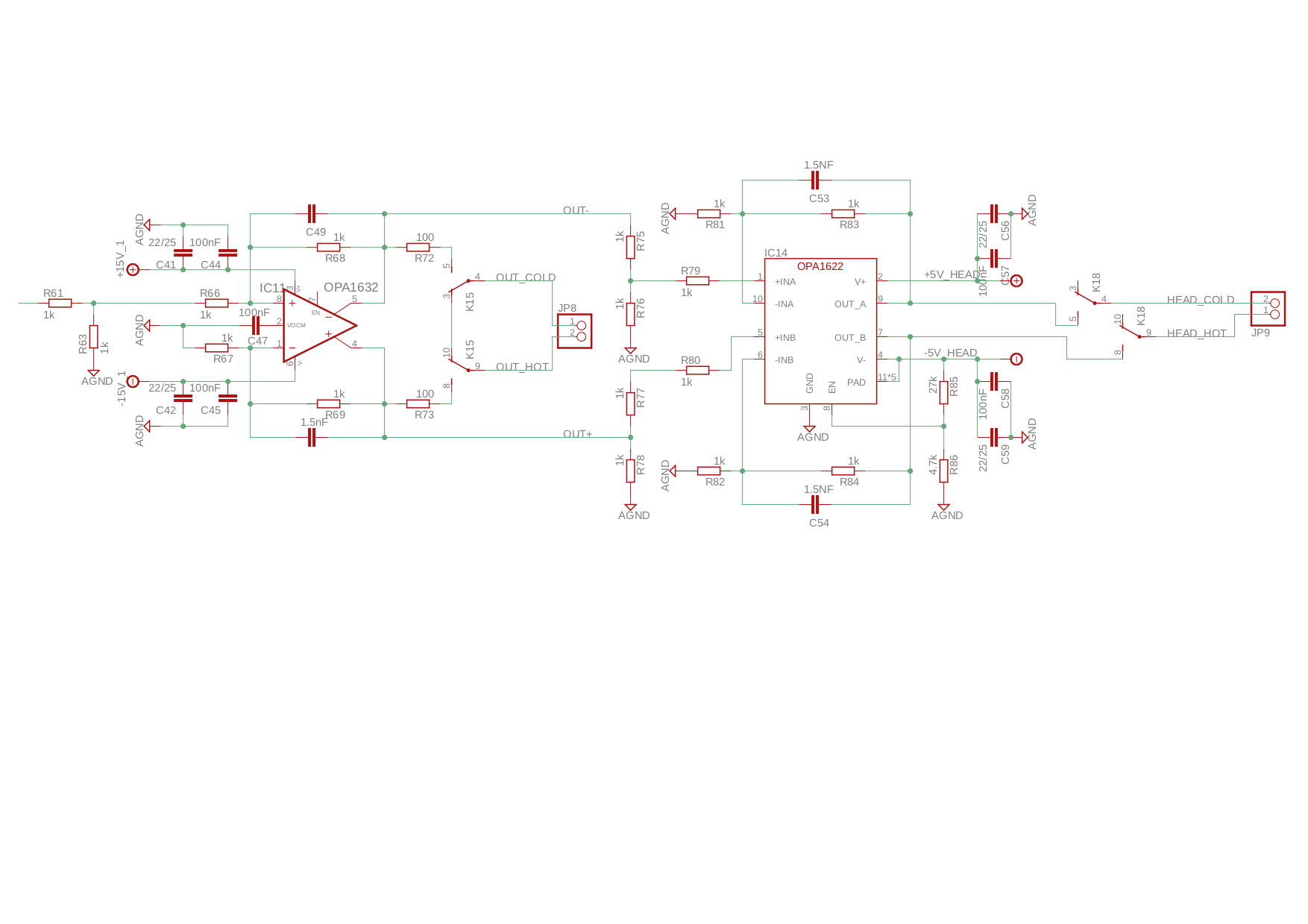Other Parts Discussed in Thread: OPA1632, INA1620
Hi,
can I use the OPA to drive balanced headphones? Please note my schematic below. Any comments or concerns?
R75 .. R78 are used to adapt to different headphone impedances. It would be nice to adapt them by using switches. Can you recommend an ultralow harmonic distortion / noise switch?
Many thanks in advance
Andreas Nicklas


